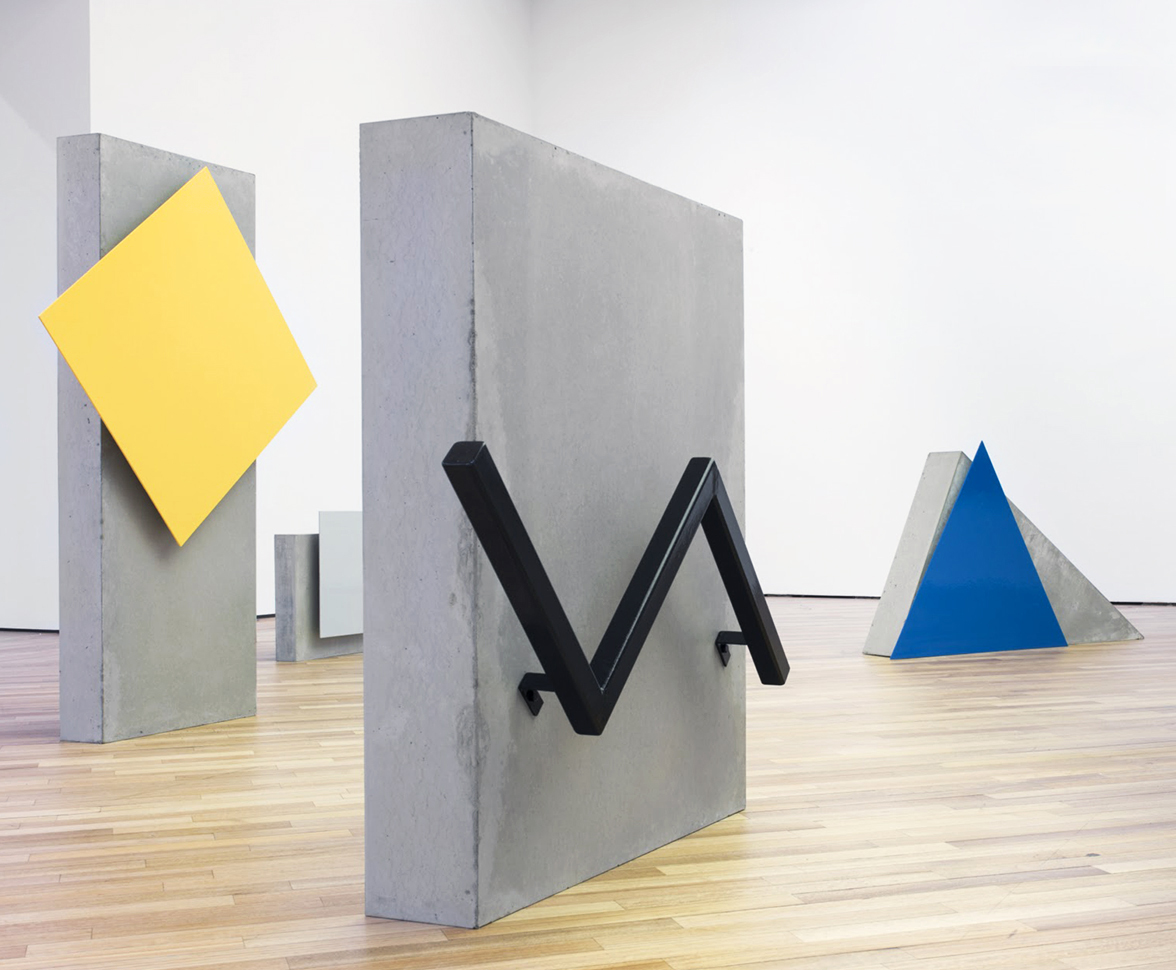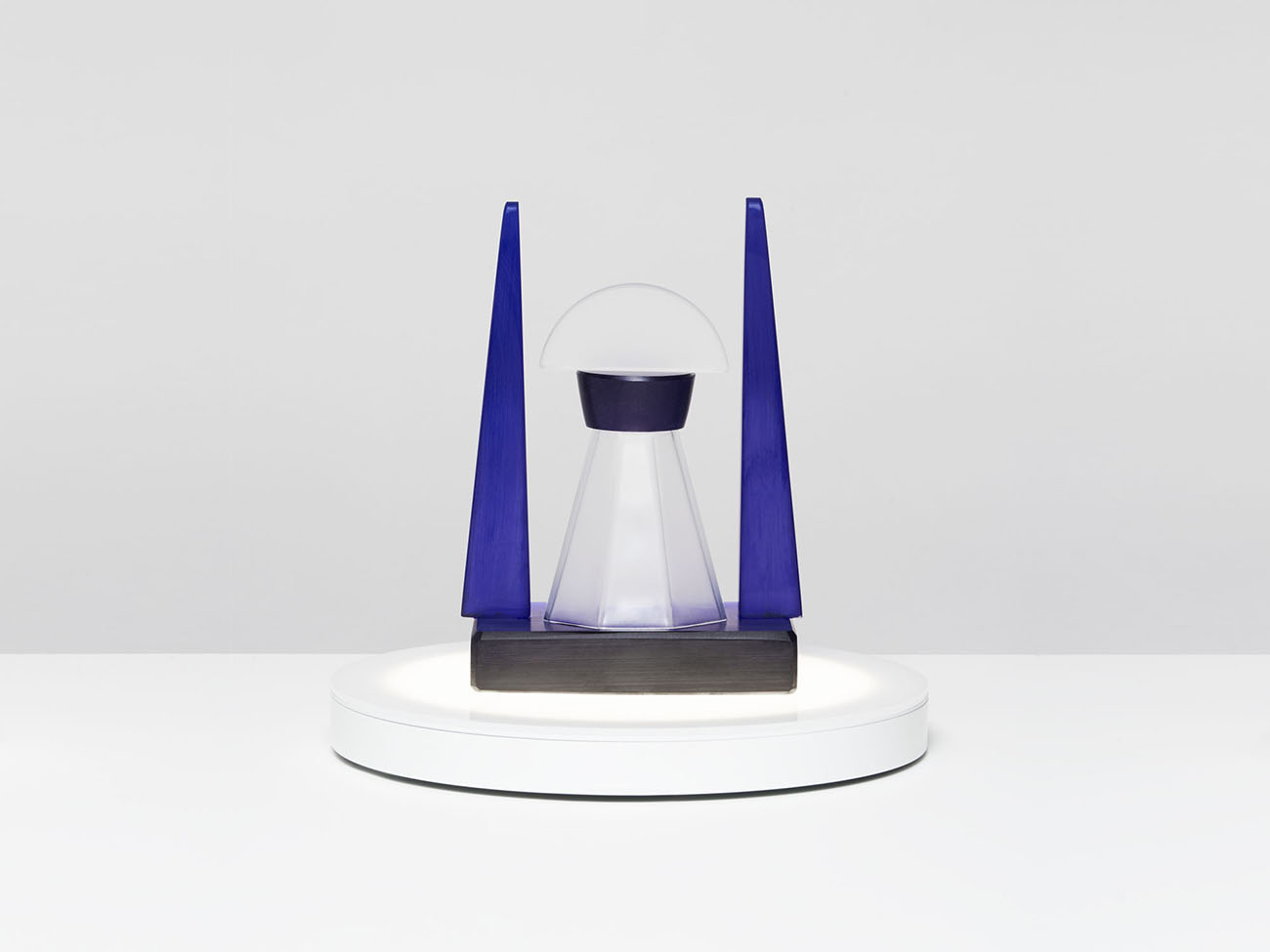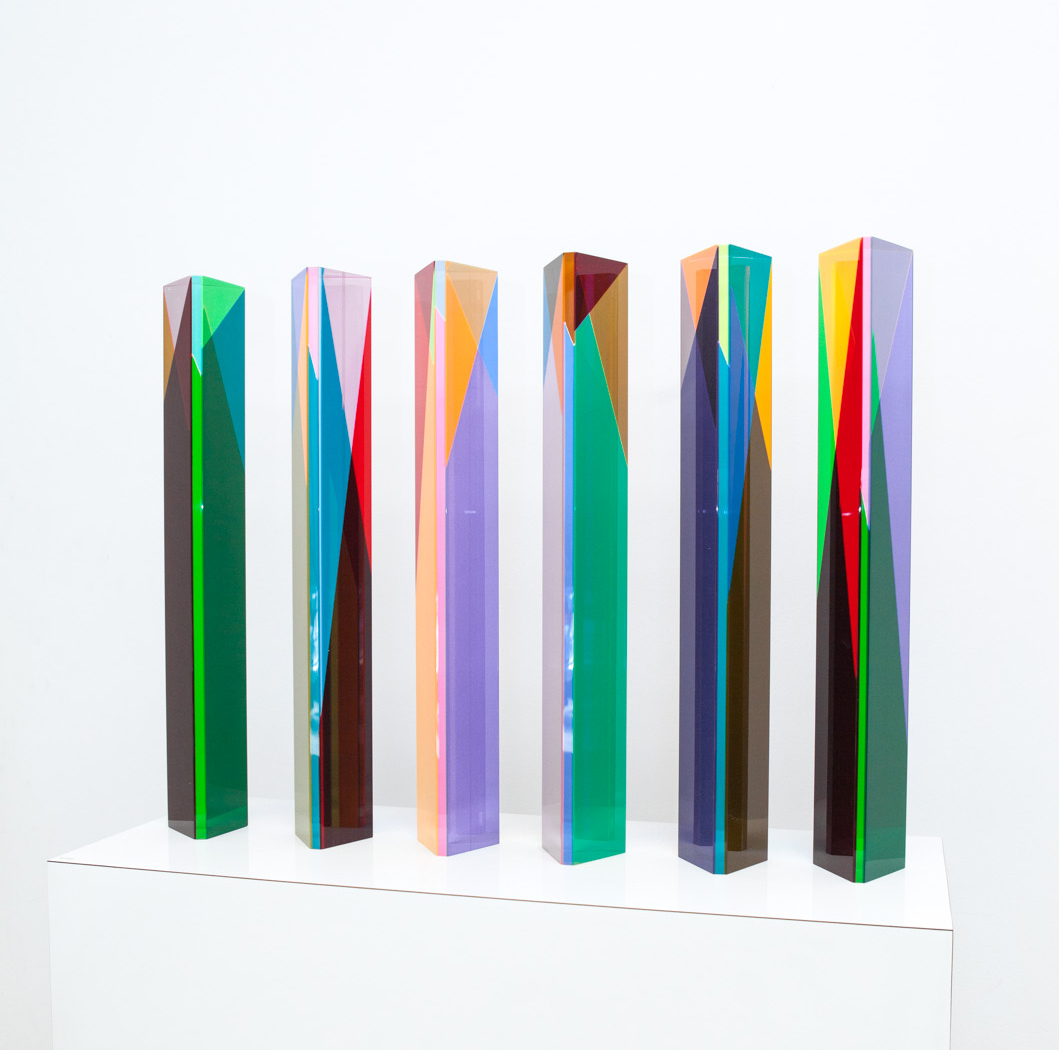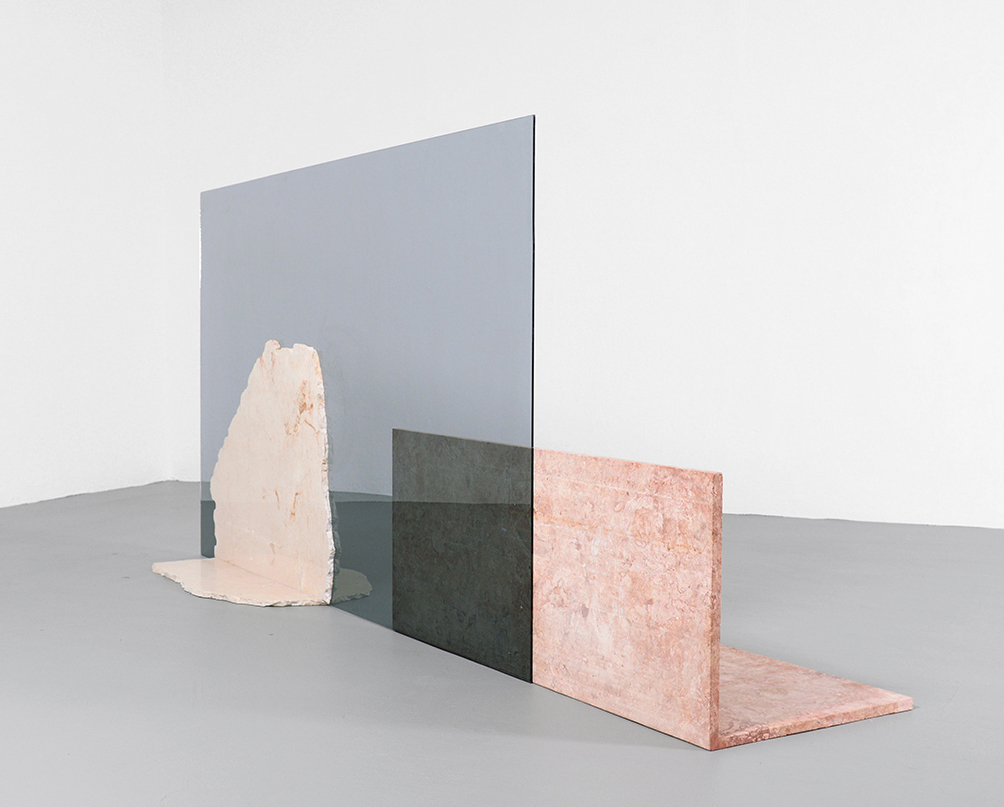
04.24.17
Q+A
Jose Davila Creates Sculptures From Glass, Stones, and Gravity
Using simple materials like stone and cardboard, Mexican artist Jose Dávila mines art history to create some of the most relevant works today. His oeuvre is defined by a diverse, medium-traversing output, from his precariously balanced sculptural arrangements to his “cutout” series, in which he extracts the focal point of iconic works of art, creating an absence that bestows a three-dimensionality upon the resulting pieces. In all of his art, there is an underlying exploration of how the modernist movement continues to influence the modern mind.
After a solo show at Sean Kelly Gallery in New York at the end of last year, where he showed his latest photographic cut-outs, sculptures, and paintings, the Guadalajara-based Dávila is now gearing up for a series of new happenings. Among them is a solo gallery show at König Galerie in Berlin at the end of this month, as well as his first solo museum show in Germany to be held at the Kunsthalle Hamburg in May. He’s also preparing for the October debut of a public sculpture tied to the Getty-led Pacific Standard Time: LA/LA celebration of Latin American art and Latino art in dialogue with Los Angeles. He recently took time from his busy schedule to sit down with Sight Unseen to talk art, influences, and statement making in a decidedly political era.
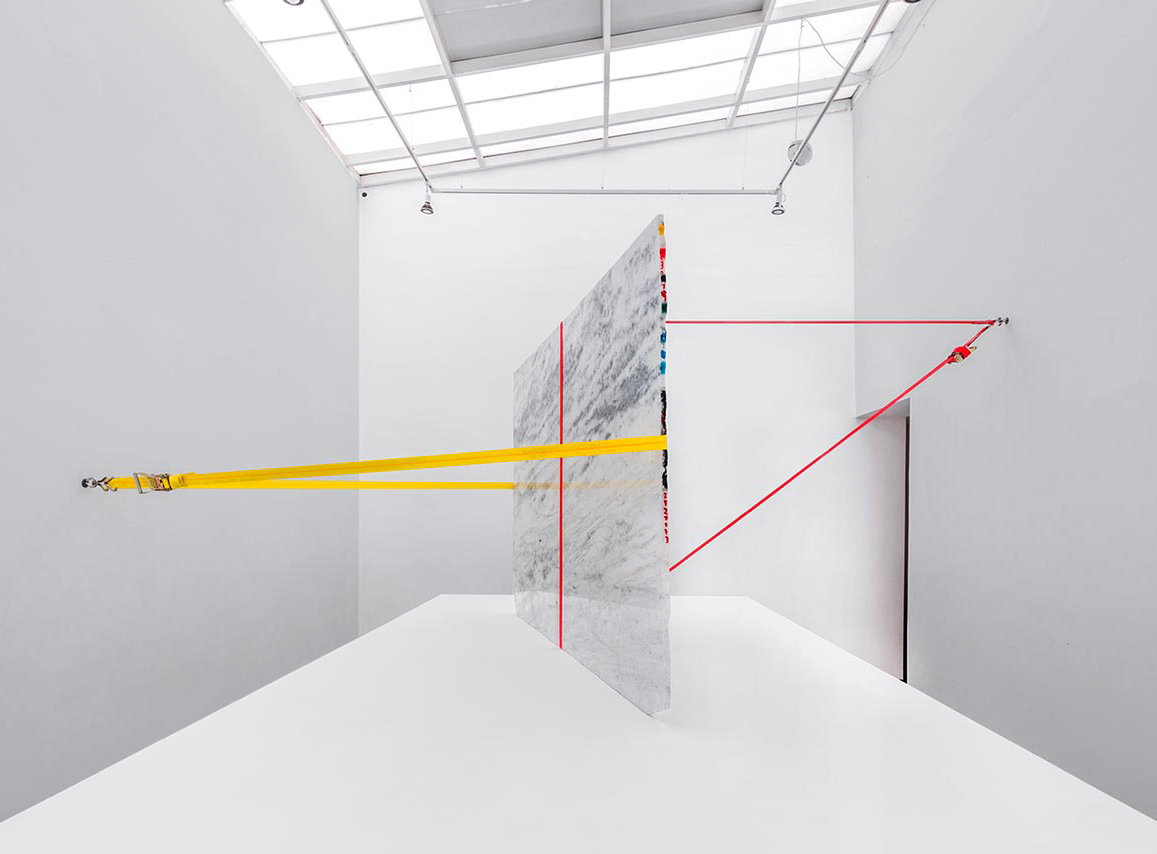
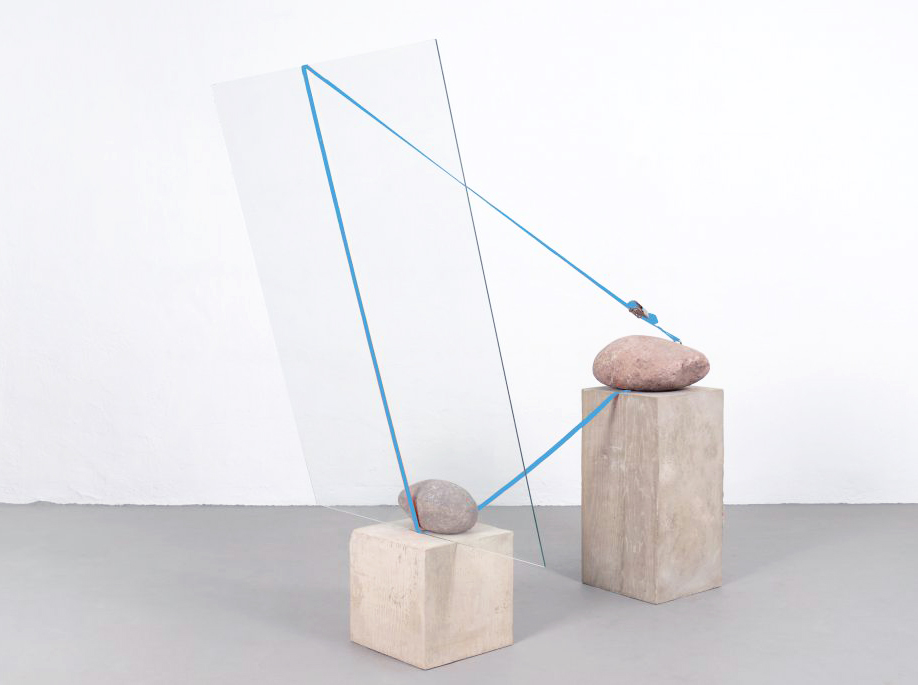
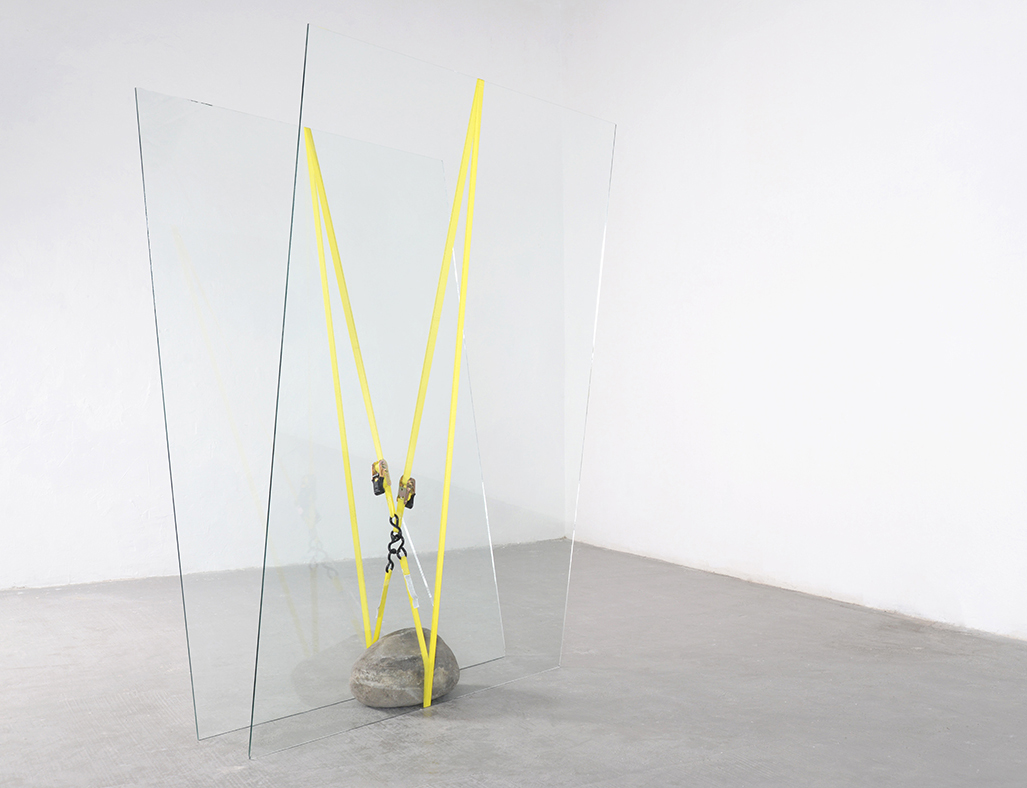
Can you talk about your training as an architect? Why did you pursue architecture and why did you depart from it?
I found interesting and appealing a lot of the things I saw at architecture school — the use of light, space, and different materials, as well as how to compose a narrative of meaning with space, material, and proportion. Many of these principles are shared with a sculpture practice. However, my main passion always leaned towards art. There’s a certain liberty or freedom in the practice of art that in architecture is much more rigid.
And I suppose with architecture you’re often working for a specific client.
Yes, instead of working for your own preoccupations. That’s also something that made me decide not to pursue the career of architecture professionally. But some of my sculptural practice is very much informed by my training in the sense of balance, proportion, and other qualities I learned in architecture school.

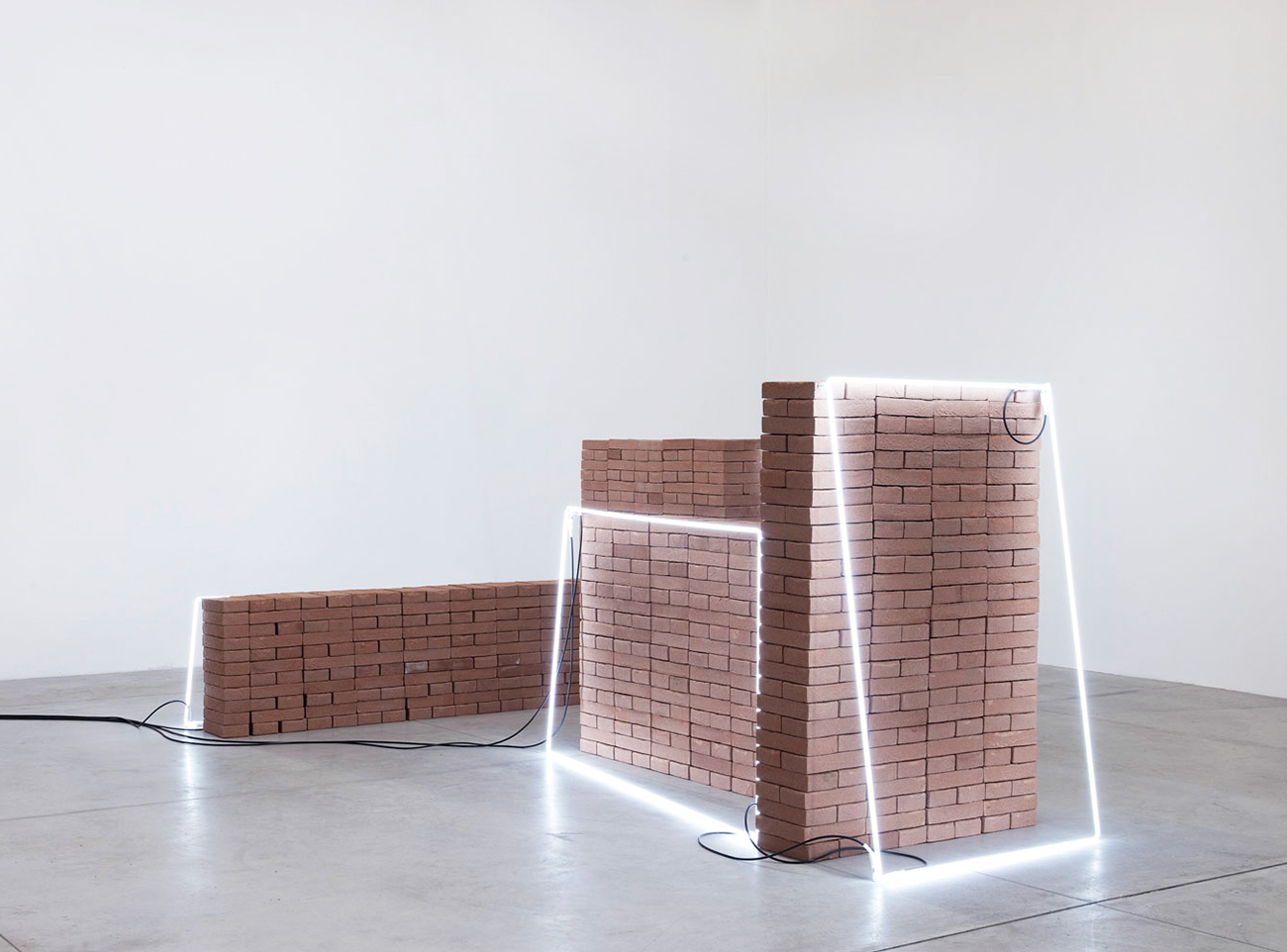
How does your identity as a largely self-taught artist influence your creative output?
The influence of being self-taught came in different ways. When you’re not academically trained as an artist, you create your own set of work, your own protocol. That’s important because you construct it from scratch in a way. On the other hand, I’ve been creating and exploring through art books. I have a library of art books I’m passionate about, and I’ve come to understand art through the work of other artists.
When were you able to self-identify as an artist for the first time?
It’s with time that I found that working with sculpture was something I felt very comfortable with, something that clicked with me. I had preoccupations with the struggle against gravity and how different materials can dialogue, from something very primitive to something very refined.
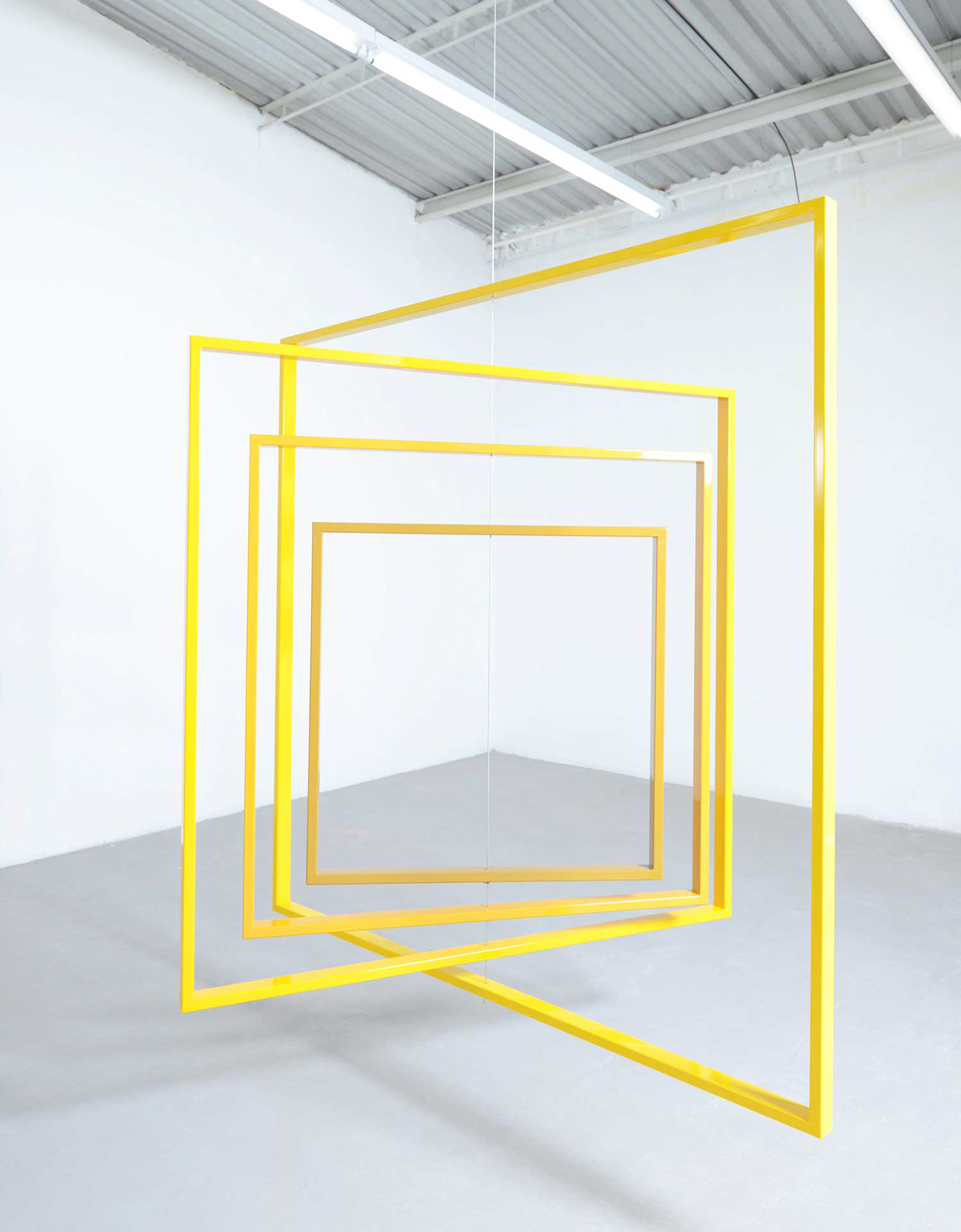
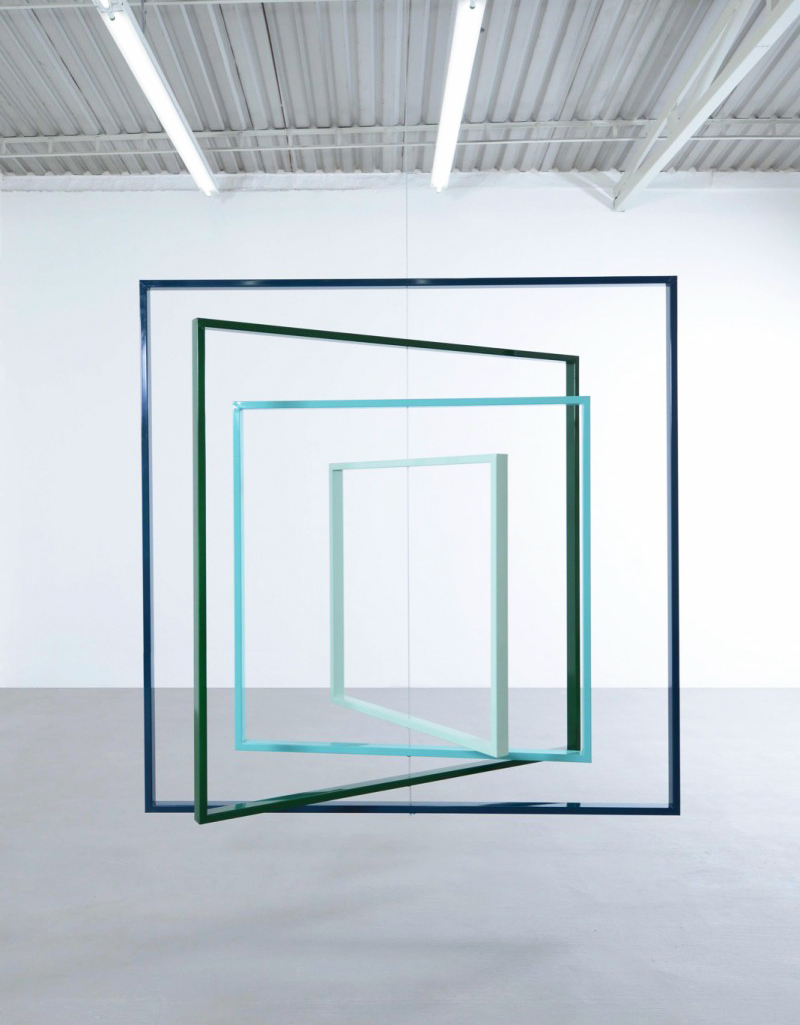
When did you make your first sculpture?
When I was studying architecture the first thing I started to do in artistic terms was to take photographs. I had a darkroom for developing and printing my photographs. So my first connection was with photography. In architecture school around 1995 or 1996, I started doing some artistic interventions in site-specific contexts, and those were my first sculptural works outside of photography.
In your ongoing series, Homage to the Square, you create mobiles in different colors and sizes that suspend from the ceiling at varied heights. In a sense, you advance Josef Albers’ inquiry into the perception and interaction of color through a mathematically determined format of squares by establishing the square as a 3-D object in motion. Who else has had a significant impact on your art?
The work of certain American artists of the 1970s like Richard Serra, Sol LeWitt, and Donald Judd greatly influenced me. They developed their own universe. But what united them was that they created very strong personal narratives. And those artists ended up nurturing art history. I was also very interested in the work of the neo-concretes, the Brazilian artists such as Helio Oticica and Lygia Clark.
When people make connections between your works and those of figures like Judd and Albers, do you feel satisfied that the linkages are being successfully communicated?
I like this phrase of Isaac Newton: “If I have seen further, it is by standing on the shoulders of giants.” I think it’s important always to recognize that there are precedents and that precedents are central in order to advance. And in terms of art history, it’s flattering to know you’re in the middle of a line, and there are points before you and there will be points ahead of you.
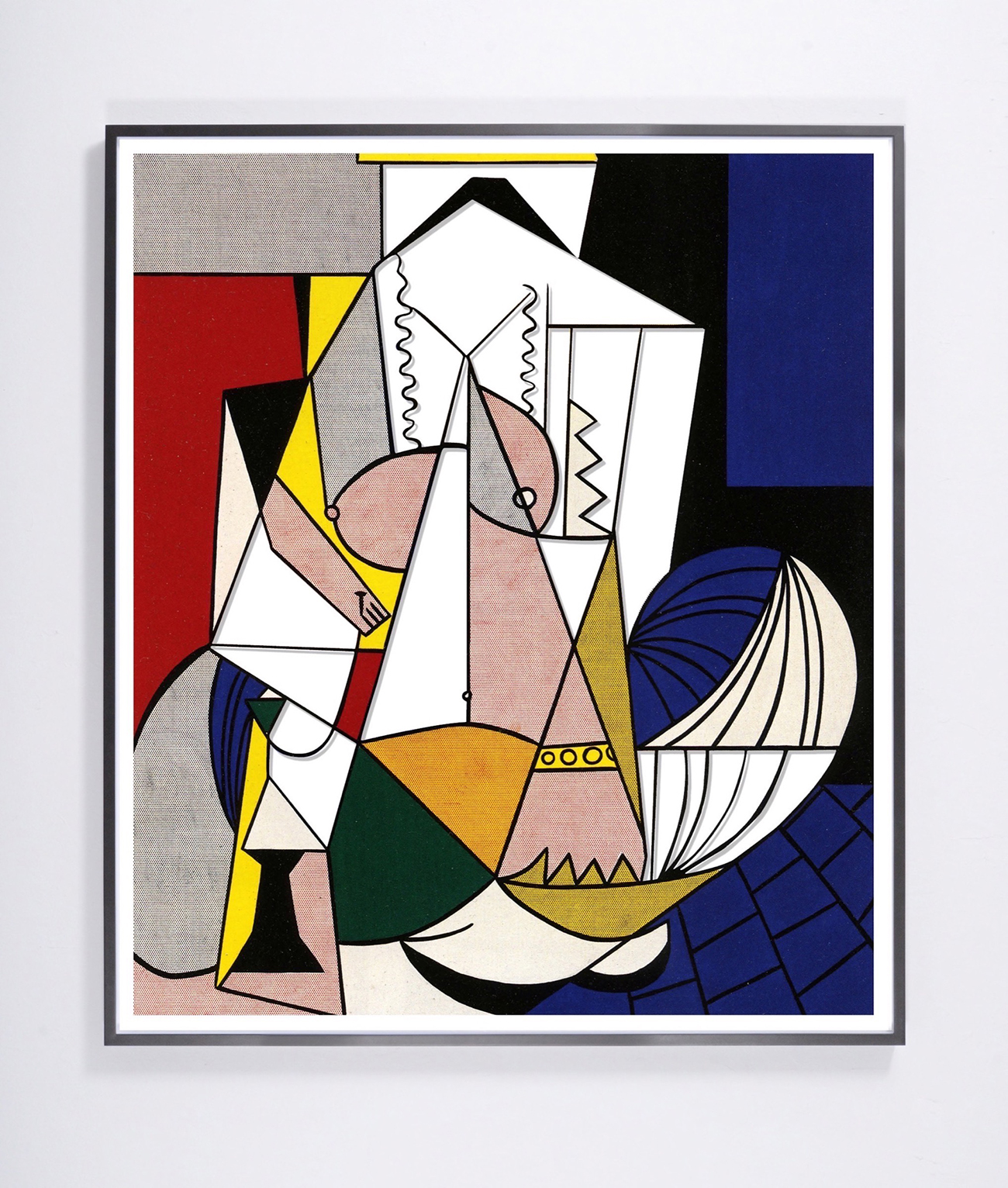
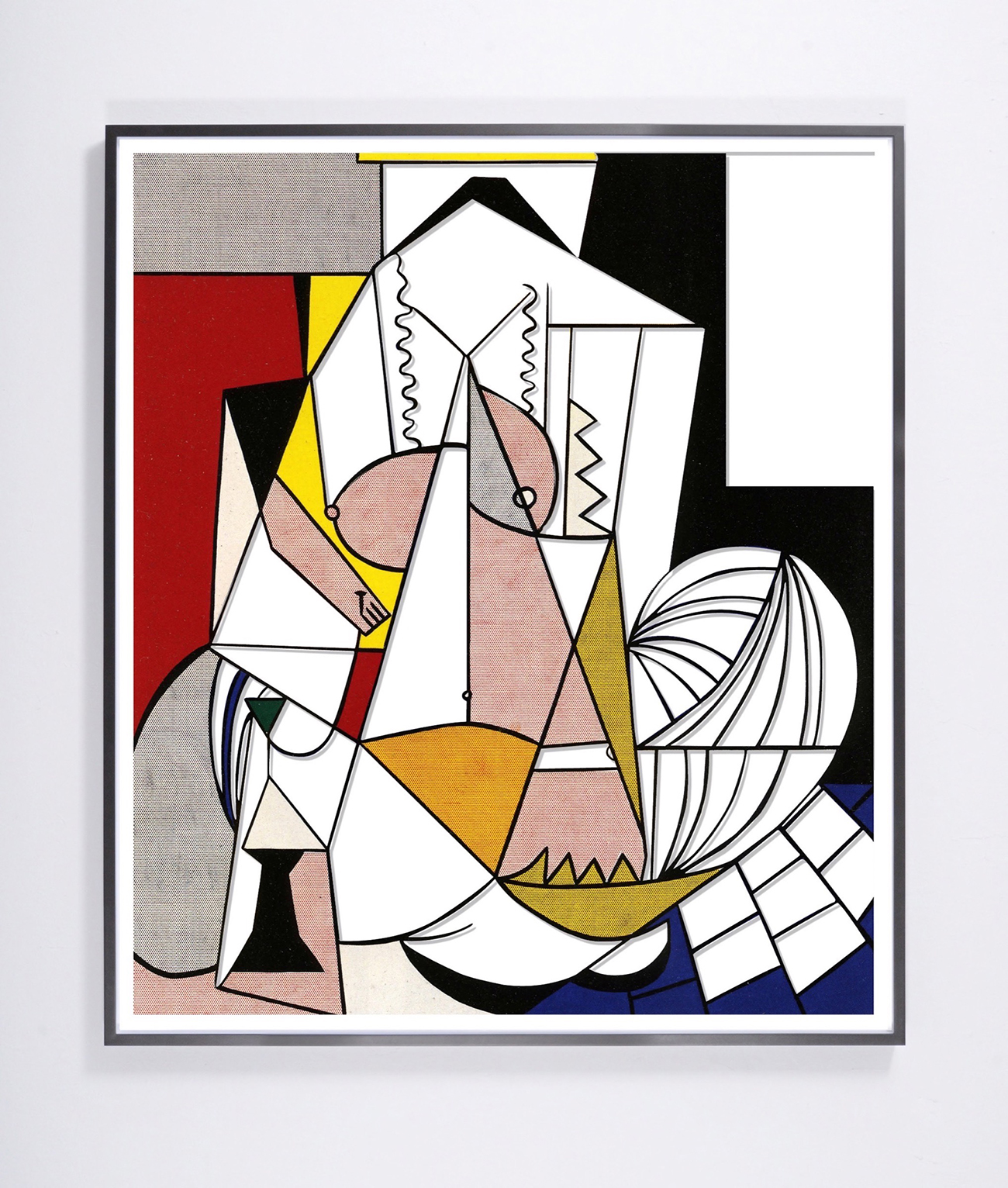
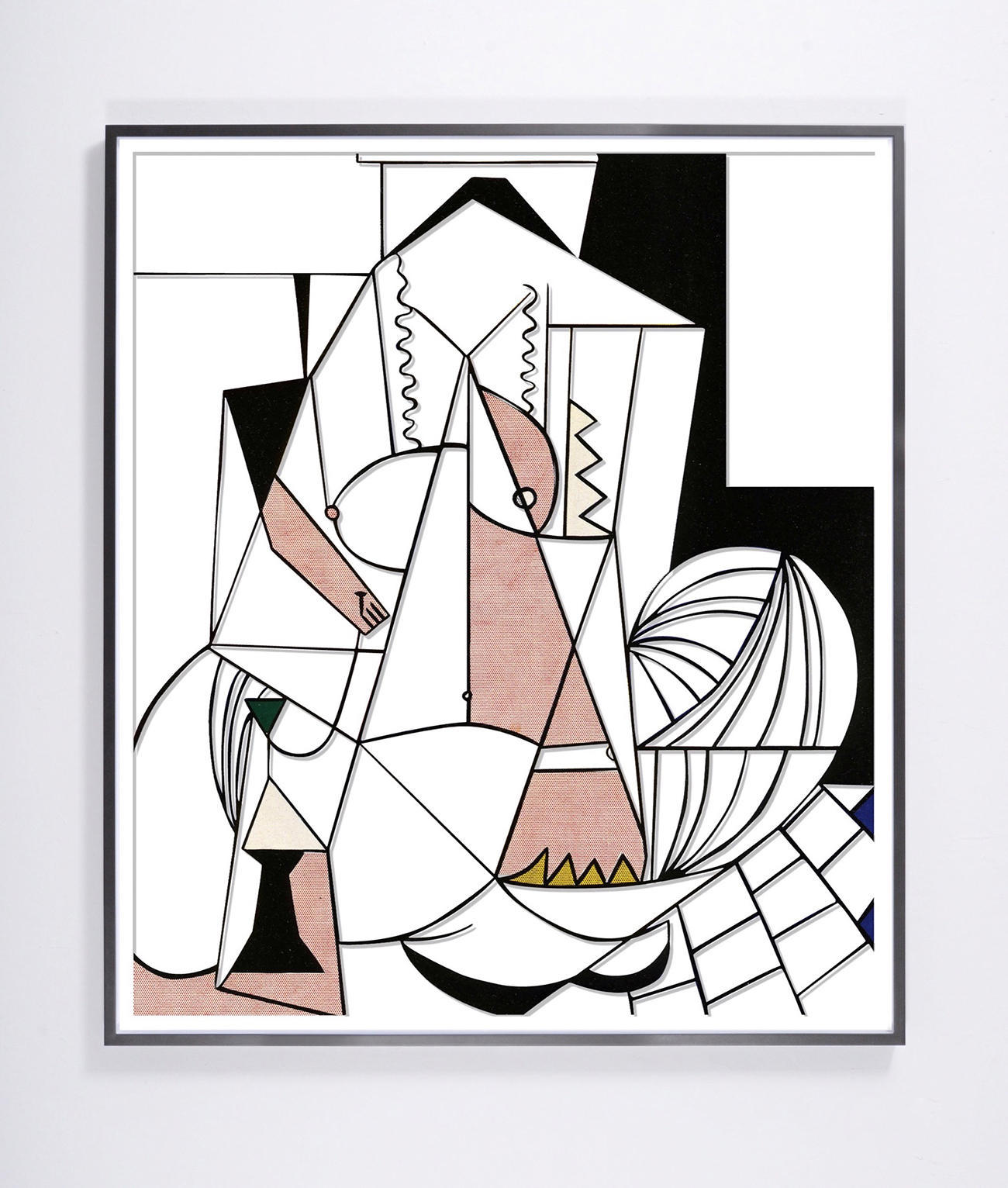
For your recent show at Sean Kelly, you produced a series of photographic cut-outs based on Roy Lichtenstein’s “Femme d’Alger,” which simultaneously reference Picasso and Delacroix. How did you arrive on using Lichtenstein’s image?
He was someone who made his work out of other works. So it made a lot of sense to continue that line of usage in a way.
In the same show, you demonstrated an interest in the most naive elements of construction. Can you talk about “Imperfect Circle,” which was composed of stones arranged on the gallery floor?
I’m interested in elements, like rocks, boulders, and stones that are the most primitive forms of construction but also of sculptural work. The positioning of certain rocks is a way of knowing there was a human intention of some kind. Something simple can be very strong. And it’s a way of talking about art history, and the oldest, purest form of creation in a way.
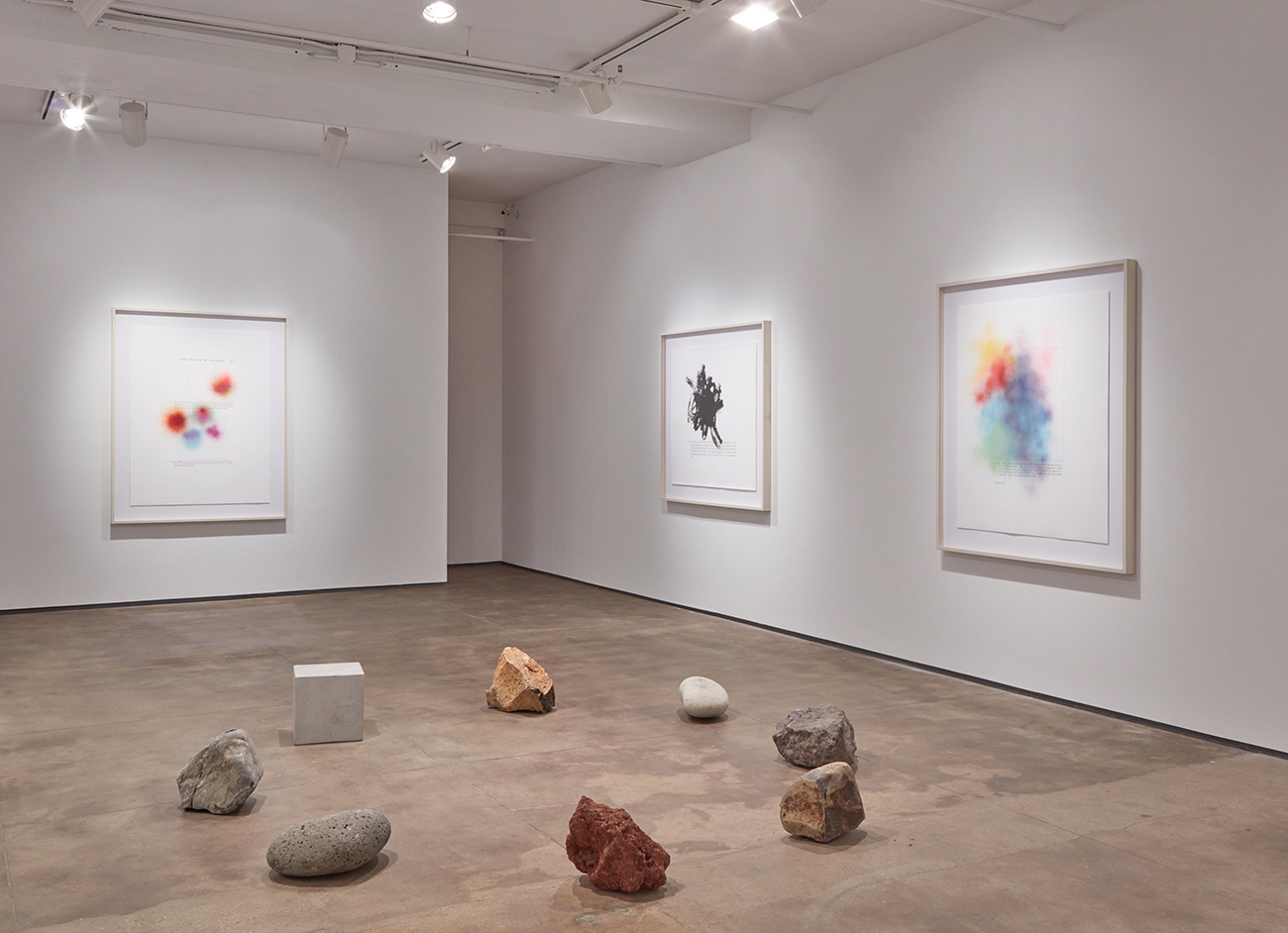
In an interview once you mentioned that reimagining Donald Judd’s stacks with cardboard was inherently political — could you expand on this point?
I understand that many of Judd’s works are focused on how we relate to them in space and how these objects articulate the space around us. He was very specific about measurements, and he had all these spatial relationships. And I thought you could achieve the same end using cheaper materials, which talks about the different political realities of a first-world country and a third-world country. That was not an overtly political work. But the decision to use cardboard as opposed to pristine stainless steel was significant.
Is the cardboard work inherently less commercial or does it just take the artist’s hand to confer meaning and thus value?
I guess most of my work doesn’t really have the manual expression of the artist. Most of my work uses preexisting materials or primitive stones, and the meaning is the composition of the elements. With the cardboard stacks I think it’s also important to focus on what the work is doing rather than what the work is made of.
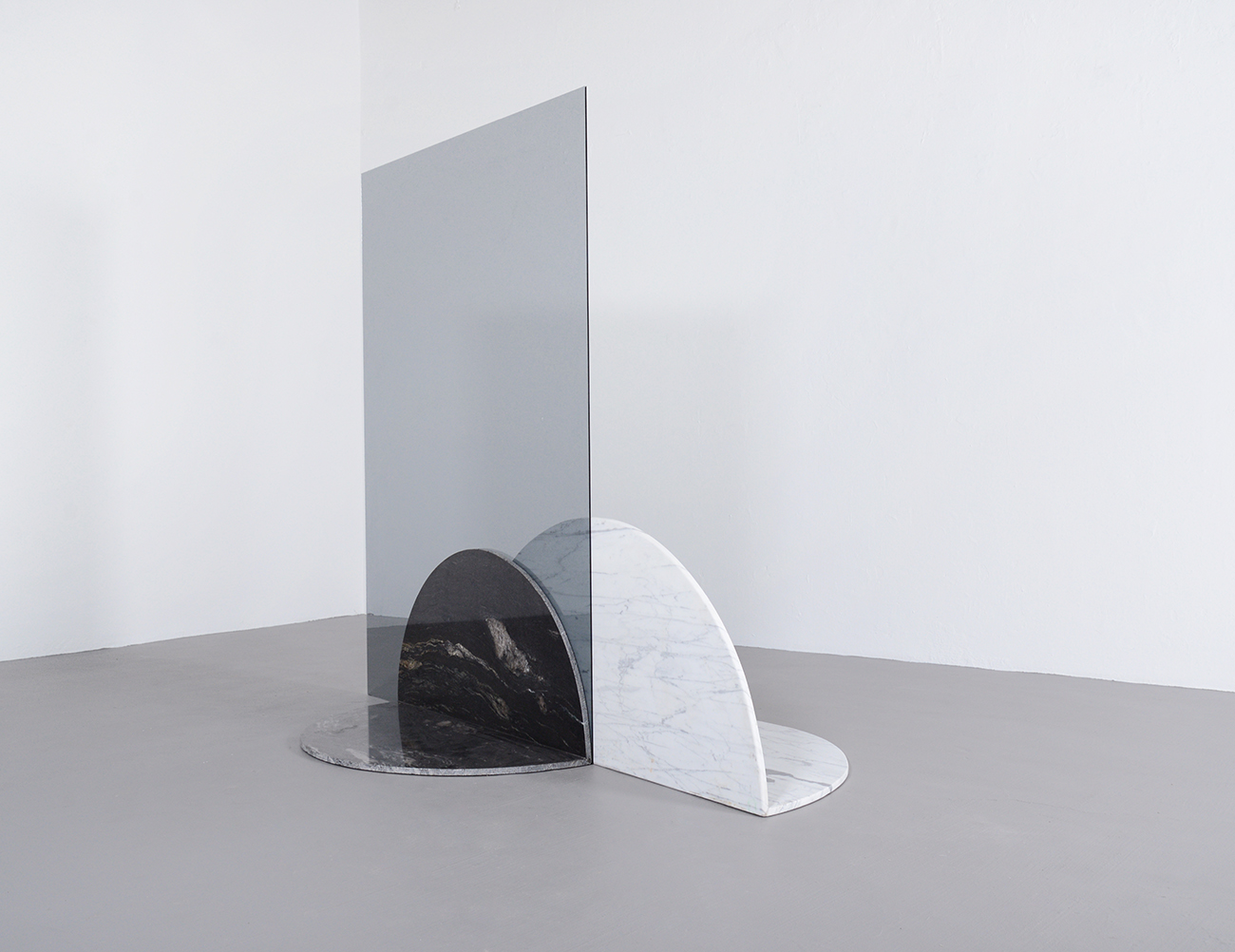
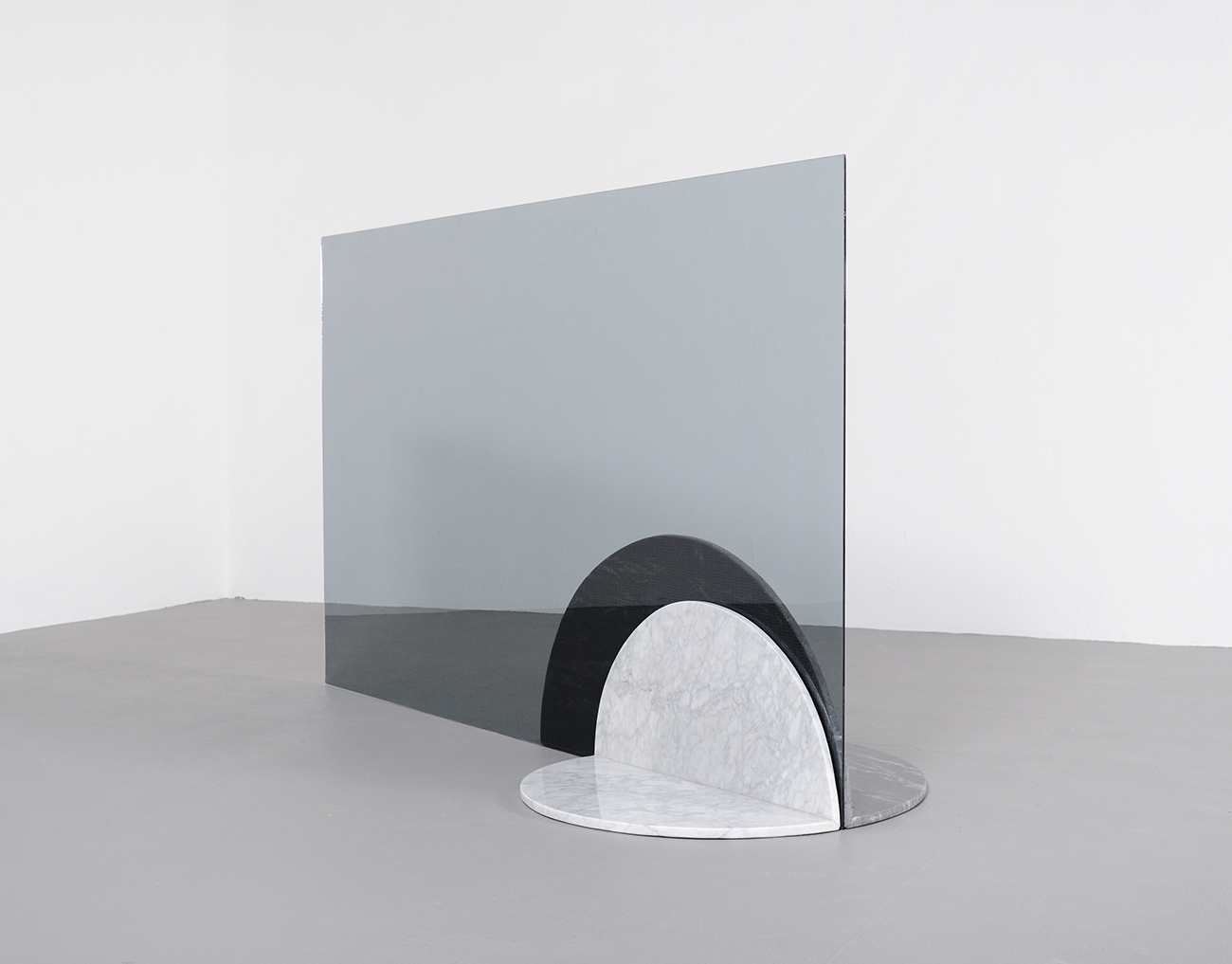
In the current climate of political discord do you feel the need to be more political as an artist?
I think to be an artist and to pursue art professionally is already a political stance. I personally like to have an engagement with my community as a person and citizen. But I don’t like to make my work talk about politics. I want it to have its own nature.
On a side note, have you been watching the political scene in the US and do you have any thoughts about the presidency?
I think Trump is unfit to run any country, never mind the US. And I think the whole world is going to suffer.
Do you think Trumpian politics will influence your art in a direct or indirect way?
I wouldn’t be surprised if at some point something has to be said and something has to be done. It’s plausible that something will address the question of what’s happening.
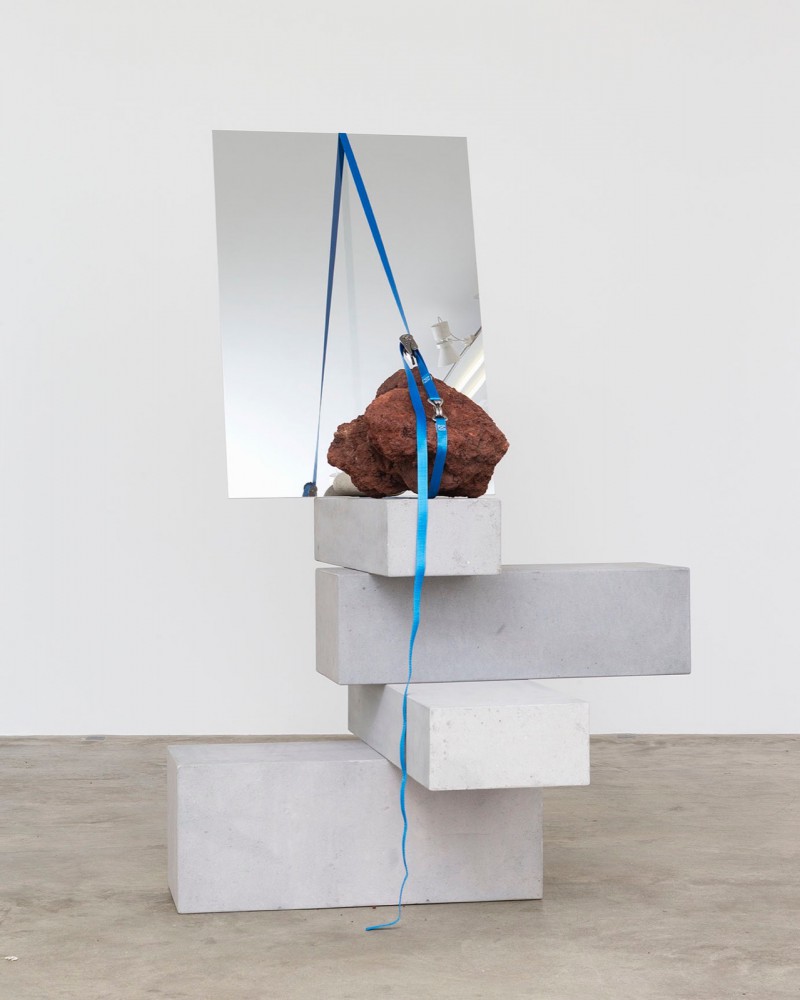
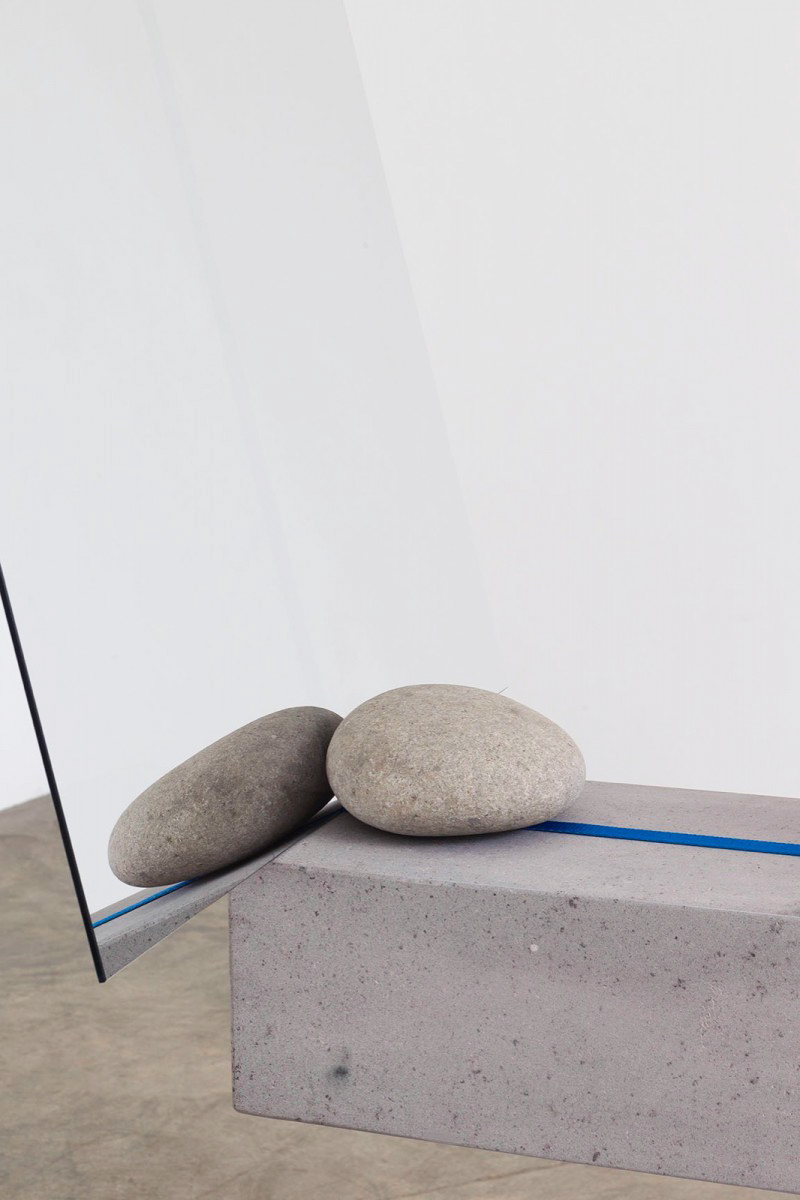
What role does place play in your art? How influenced are you, for example, by Latin American culture or the city you call home?
One of the things that definitely influences me living in Guadalajara is a way of working. We have a lot of ateliers and workshops that are non-industrialized. Normally in Europe and in the US, things are more industrialized. My work may not look very Mexican in terms of ethnicity. But the fact of the matter is it’s very Mexican in the process of creation, because it’s created with labor from non-industrialized ateliers.
Can you say anything more about the upcoming sculpture you’re planning for Pacific Standard Time: LA/LA?
It’s all about unity and permutation. It’s one sculpture that can also be broken into 14 different pieces. It starts as a concrete cube, like a three-dimensional Tetris. The cube starts to disappear, because the parts that build the cube are taken into different iconic parts of LA where people will interact with them on a human scale. Eventually, it will come back together as one.
